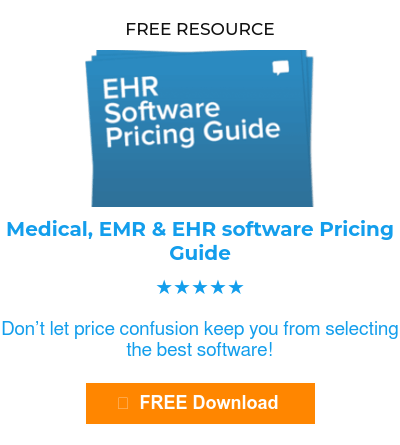Understanding the Need for Electronic Health Records (EHRs) in Healthcare Organizations
Understanding the need for Electronic Health Records (EHRs) in healthcare organizations goes beyond merely digitizing patient records—it’s about revolutionizing patient care. EHR systems offer instant access to real-time patient information, pivotal for clinical documentation, treatment plans, and secure patient communication. They enhance logistic productivity and ensure timely, accurate, and compliant report generation—key elements for safer and more effective patient care management.
The process of selecting an EHR system demands a thorough evaluation of existing workflows across departments, ensuring the new system aligns with the institution’s operational needs. It must address critical aspects like interoperability and the confidentiality, availability, and integrity of patient data. Moreover, readiness assessment, comprehensive staff training, staff satisfaction evaluation, and adherence to regulatory criteria are fundamental to the planning and successful adoption of EHRs.
Healthcare practices are increasingly shifting towards cloud-based EHR systems. This model offers the convenience of remote server hosting by vendors, coupled with the financial ease of monthly fees, simplifying access and management of vital patient information. Thus, EHRs are indubitably a cornerstone in the future of healthcare, streamlining processes and elevating the standard of care.
Building the Implementation Team
Building the right implementation team is imperative for successful EMR implementation. A well-assembled team typically includes a project manager, who leads the team with vision and authority, and delegates tasks effectively. Members from the information services department provide technical guidance while clinical and office staff offer insights into practical workflow applications. Technical members, possibly including application analysts and developers, focus on the software’s technical aspects, ensuring it meets user needs—a physician champion advocates for the system’s clinical value and physician adoption.
The project team at UWDFM embraced a holistic approach by visiting other practices with recent EMR deployments. These visits provided crucial learnings and shared experiences, facilitating a more informed and tailored implementation plan.
Selecting a Project Manager and Implementation Committee
The project manager orchestrates the execution of the EMR roll-out, supported by an implementation committee. This committee should be a mix of key stakeholders including application analysts, application developers, QA test engineers, physician and nurse advocates, billing advocates, meaningful-use managers, and super-users. The diverse perspectives within the team help foresee different challenges and address them proactively.
The composition of the team can vary, depending on the practice’s scope and budget, and the project manager might decide to engage external consultants for their specialized expertise. In sum, selecting a cross-functional and knowledgeable implementation team is the cornerstone of a smooth transition to a new EMR system.
Assessing Staff Readiness and Satisfaction
To ensure the successful adoption of the EMR system, staff readiness and satisfaction must be assessed and prioritized. Training conducted over several weeks with the involvement of the vendor’s team is vital. This includes in-person sessions and complementary resources, such as videos to bolster staff understanding.
It is critical to recognize that staff training might temporarily reduce productivity, a factor that should be integrated into the timeline of the implementation plan. The goal of the training is not only to familiarize staff with the system but to ensure that the patient care quality remains high post-implementation. Regular satisfaction surveys and check-ins can help monitor staff morale and readiness, addressing any concerns promptly.
Planning for Temporary and Administrative Staff Support
The role of temporary and administrative staff is often crucial during the implementation phase. They help manage the increased workload, contributing to tasks like data migration, system testing, and while aiding in the delivery of regular administrative tasks. Effective planning for temporary staff should outline specific responsibilities to avoid overburdening the existing staff and ensure a smooth transition.
Training for temporary staff is as essential as for the permanent team, ensuring they have the skills to support the EHR implementation effectively. Clear communication and a collaborative atmosphere between all staff members are essential to maintain operational continuity throughout the implementation phase.
In conclusion, careful planning and a collaborative spirit lay the foundation for a successful and harmonious EHR implementation, ultimately benefiting the entire healthcare organization and enhancing patient care.
With these strategies in place, healthcare organizations can navigate the adoption journey of EMRs and realize the benefits of improved patient care, reduced medication errors, and enriched care management.
Creating the Implementation Plan
The foundation of a fruitful Electronic Health Records (EHR) system starts with a conscientious effort in creating a robust implementation plan. This plan serves as a roadmap, detailing the path from pre-implementation assessments all the way through to post-implementation support. A well-crafted implementation plan is informed by clear and measurable objectives, which include the transition to a fully paperless environment and achieving significant efficiencies in workflow. As part of the planning process, healthcare organizations undertake an extensive workflow analysis and redesign, adapting current practices to benefit from EHR functionalities.
Accommodating the EHR system within the existing infrastructure is another critical aspect, with facility modifications potentially needed to support the new digital workflow. Strategic placement of hardware—such as computers and printers—is essential to allow seamless access and entry of data throughout the healthcare facility. Simultaneously, choosing the appropriate hardware, whether desktop computers for their reliability or mobile devices for their convenience, and installing these efficiently requires diligent consideration to fit the unique needs of the medical practice.
The planning stage also encompasses software configuration, which involves calibrating the selected EHR software to align with the practice’s particular requirements while upholding rigorous security standards. Furthermore, implementing a test installation provides an invaluable opportunity for the healthcare team to engage with the system, promoting familiarity with both hardware and software prior to the live roll-out.
Setting Clear Goals and Objectives for the Implementation Project
Identifying and establishing precise goals and objectives is a linchpin for the implementation project. Objectives like moving towards a paperless system and streamlining clinical processes manifest an organization’s aspirations with the EHR and provide a benchmark for measuring success. Project managers and implementation teams will focus on crucial milestones such as reducing patient wait times, improving data accuracy, and ensuring there’s a continuity of care through real-time information sharing within the implementation plan. These goals not only drive the process but also play a significant role in engaging staff and preparing them for the upcoming changes.
Developing Strategies for Successful Adoption and Integration of EHRs
To secure the successful adoption and integration of EHRs, strategies must be developed that reflect an understanding of the practice’s current processes, staff capabilities, and patient needs. Change management strategies lay the groundwork for a systematic transition by anticipating alterations in workflow and addressing user concerns. Rooting the implementation in robust governance and data stewardship practices ensures sustainable success by focusing on data accuracy and integrity. Training tailored to the EHR system and the practice’s unique requirements enables staff to make the best use of the new electronic tools at their disposal. Communication of the change management plan to all stakeholders further ensures that everyone is aligned and understands their role in the transition process.
Addressing Medication Errors and Improving Care Management with EHRs
EHRs play a pivotal role in reducing medication errors—a leading patient safety concern in clinical practice. With integrated clinical decision support tools, the EHR alerts healthcare providers to potential drug interactions, allergies, and correct dosages. Such features not only enhance the quality of care but also ensure medication safety. EHRs also support care management through comprehensive access to patients’ medical histories, treatment plans, and test results, enabling informed decision-making. By offering a centralized platform for patient information accessible to multiple healthcare providers, EHRs foster a more coordinated approach to patient care. Effective integration of EHRs into clinical practice has the dual benefit of improving care management through optimized medication administration processes and bolstering communication among care teams, thus minimizing the potential for clinical errors.
Careful and systematic planning with clearly defined goals, strategic adoption measures, and a focus on reducing medication errors sit at the heart of successful implementation and management of Electronic Health Records, ultimately revolutionizing healthcare delivery and patient outcomes.
Executing the Implementation Phase
Executing the implementation phase of an Electronic Health Records (EHR) system involves a meticulous process where healthcare organizations meticulously deliberate on streamlining current clinical processes. A work-flow analysis stands at the core of this phase, serving as an extensive review of how existing tasks can be refined to complement the incoming digital system. This analysis not only uncovers inefficiencies within current routines but also steers the development of innovative workflows that leverage EHR functionalities.
When preparing for an EHR system, the physical environment must evolve in tandem. Facility modifications encompass a spectrum of changes necessary to house the new technology, ranging from the strategic positioning of workstations in exam rooms to installing additional electrical and network points. Ensuring ergonomic setups not only facilitates a smoother interaction between physicians and patients but also supports staff efficiency and reduces the likelihood of repetitive strain injuries.
Evaluating the Success of EHR Implementation
To gauge the effectiveness of Electronic Health Record (EHR) implementation, healthcare organizations undertake comprehensive evaluations that span financial, operational, and qualitative dimensions. Factors such as return on investment (ROI) are crucial for understanding the financial benefits, while patient throughput rates reveal the system’s impact on operational efficiency. The integration of EHR systems also calls for examining user and patient sentiments through satisfaction surveys, thus providing deep insights into the adoption and perceived quality of the new platform.
Measuring Staff Satisfaction and Engagement with EHRs
A successful EHR implementation rests heavily on staff readiness and the alignment with daily workflows. Surveys are distributed among healthcare providers to measure staff satisfaction and gather their overall experience with the EHR system. These surveys probe into aspects like user-friendliness, efficiency, and impact on existing workflows, enabling healthcare organizations to pinpoint and bridge gaps in user training and system functionality.
Staff engagement metrics are analyzed by monitoring the utilization of key EHR functionalities which include clinical documentation, treatment planning, and patient communication tools. Engaging staff in the EHR adoption journey is also paramount, involving initiatives such as forums for open communication and sharing success stories, which reinforce a positive implementation experience.
Assessing the Impact of EHRs on Patient Care and Clinical Practice
The influence of EHRs on patient care and clinical practice is profound. Healthcare providers can rapidly access comprehensive medical records, culminating in better-informed clinical decisions and patient care coordination. By allowing seamless communication between disparate care providers, EHRs contribute to a harmonized care management model.
Moreover, the reduction of medication errors through accurate patient information is a testament to EHRs’ positive impact on patient safety. Data aggregation capabilities further empower healthcare organizations with trend analysis and outcomes measurement to continuously refine clinical practices. Additionally, linking EHR systems to personal health records enhances patient interaction and engagement, empowering individuals in their healthcare journey.


